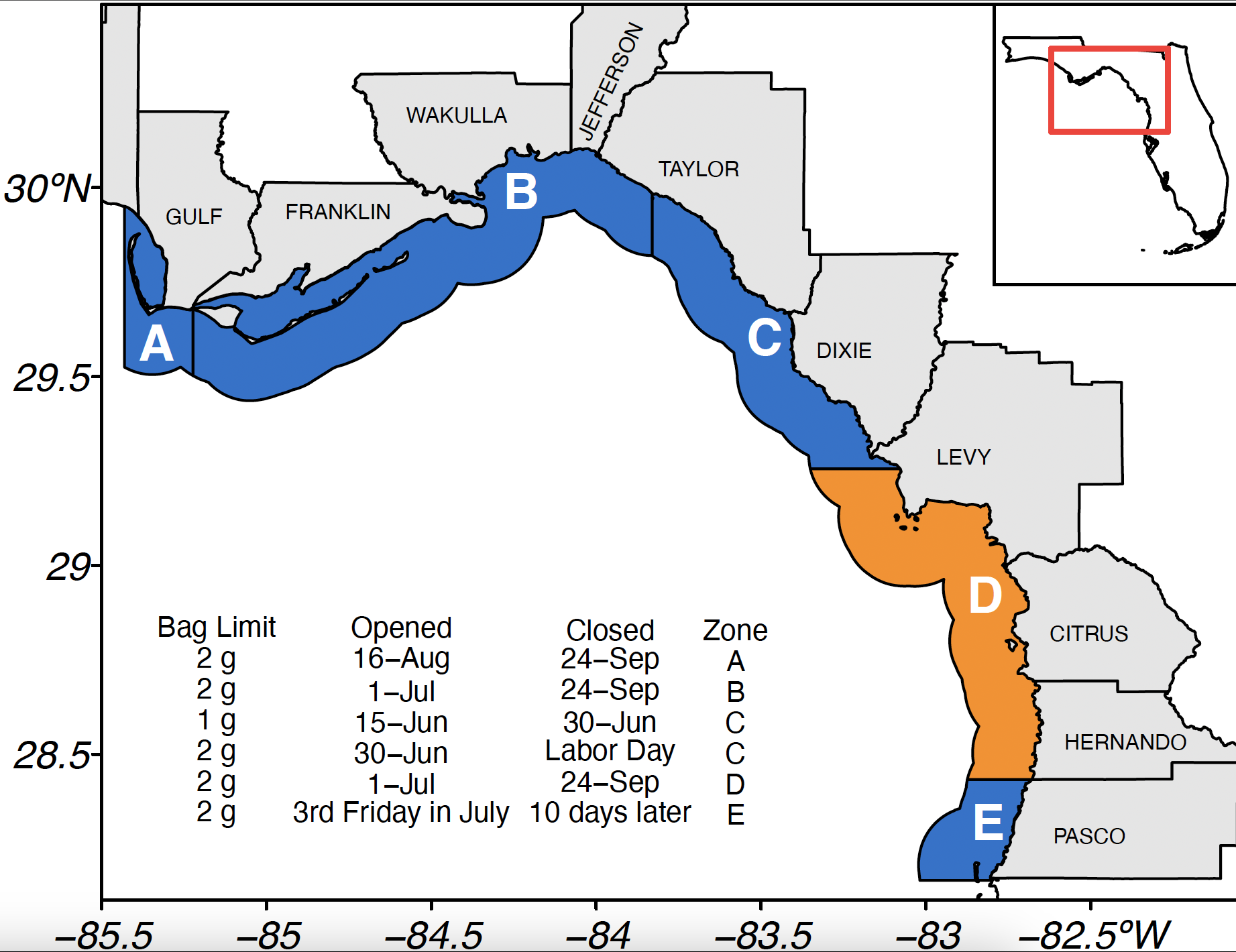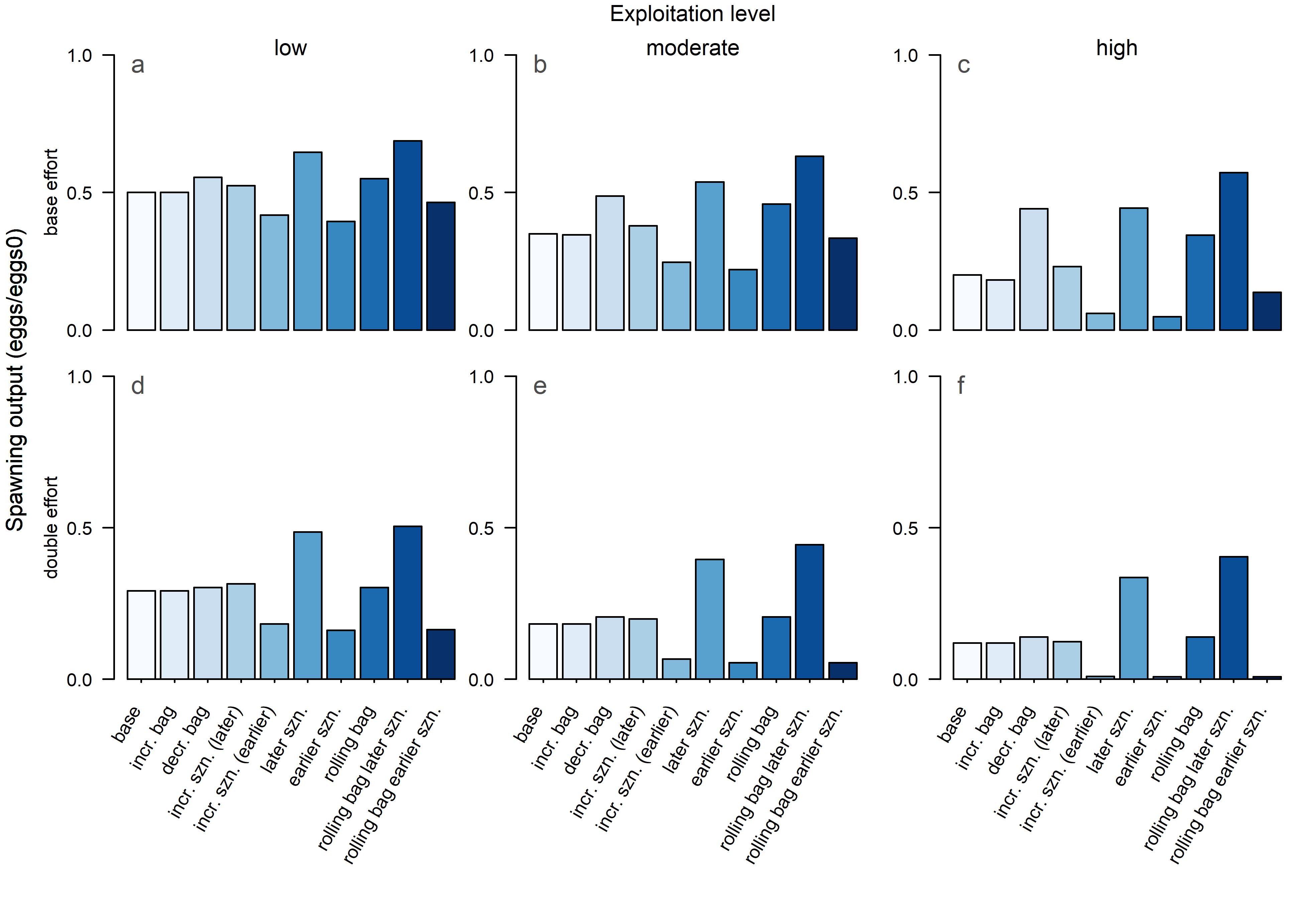Examining the performance of alternative harvest regulations for short-lived taxa: A case study of Florida Bay scallop management
Authors: Lisa Chong* (UF), Nicholas Fisch* (SEFSC), John Scott Borsum (UF), Jennifer Granneman (FWC), Diana Perry (UF), Gabrielle Love (UF), Brittany Hall-Scharf (FL SeaGrant), Robert Botta (UF), Kai Lorenzen (UF), Edward Camp (UF), Zachary Siders (UF)
*shared first authorship
In this manuscript we explore the performance of current and alternative management regulations for a simulated recreational bay scallop fishery on the Gulf coast of Florida. The bay scallop recreational fishery in Florida offers an interesting case study on the management of short lived and semelparous taxa, a group of species whose unique life history may render classical fisheries management tools or regulations suboptimal. We first develop a simulation model representing a local Florida bay scallop fishery and use this model to evaluate alternative management regulations under various levels of exploitation and effort.


Our findings suggest that biologically designed regulations (e.g. later season or rolling bag limits), that ensured some bay scallop spawning prior to harvest, performed well across all simulated exploitation and effort levels on both ecological and socioeconomic metrics. Under greater simulated exploitation, these regulations clearly outperformed other regulations, but also performed no worse than other regulations under lower exploitation simulations.
Now published: https://www.sciencedirect.com/science/article/abs/pii/S0165783623000760
Code and workflow: https://github.com/lidach/CampLabScallop